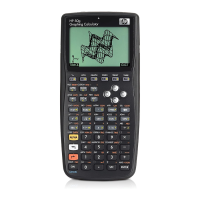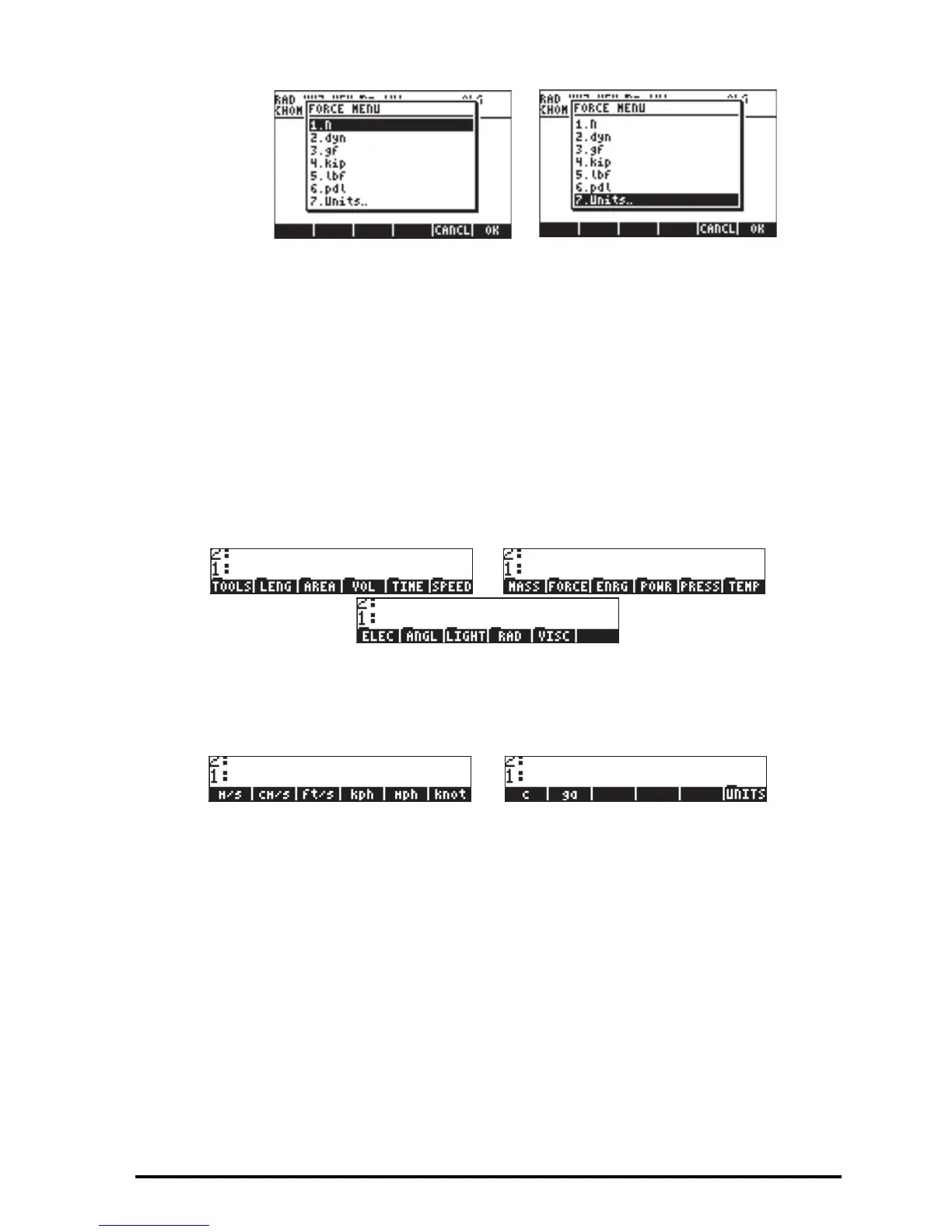Page 3-18
The user will recognize most of these units (some, e.g., dyne, are not used very
often nowadays) from his or her physics classes: N = newtons, dyn = dynes, gf
= grams – force (to distinguish from gram-mass, or plainly gram, a unit of
mass), kip = kilo-poundal (1000 pounds), lbf = pound-force (to distinguish from
pound-mass), pdl = poundal.
To attach a unit object to a number, the number must be followed by an
underscore. Thus, a force of 5 N will be entered as 5_N.
For extensive operations with units SOFT menus provide a more convenient way
of attaching units. Change system flag 117 to SOFT menus (see Chapter 1),
and use the keystroke combination ‚Û to get the following menus. Press
L to move to the next menu page.
Pressing on the appropriate soft menu key will open the sub-menu of units for
that particular selection. For example, for the @)SPEED sub-menu, the following
units are available:
Pressing the soft menu key @)UNITS will take you back to the UNITS menu.
Recall that you can always list the full menu labels in the screen by using
‚˜, e.g., for the @)ENRG set of units the following labels will be listed:

